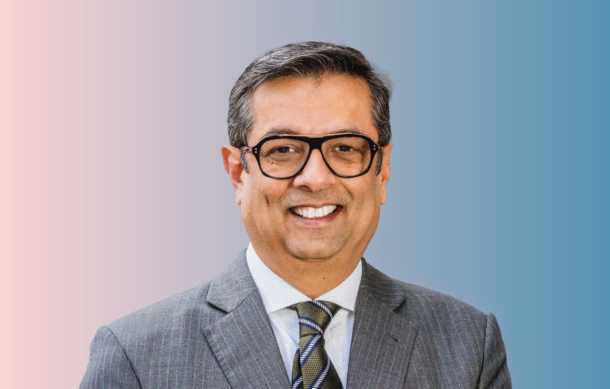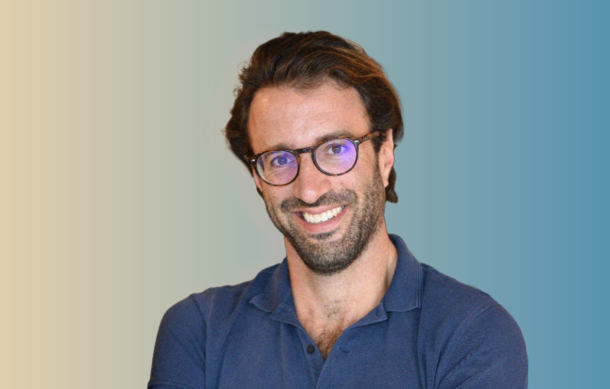In EMJ GOLD’s latest Catalyst of Pharma interview, we speak to AstraZeneca’s Dr Sunil Verma about what he believes to be the next big thing in cancer care
Interview by Dr Hannah Moir
Dr Sunil Verma is the Senior Vice President and Global Head of the Oncology Franchise at AstraZeneca. With a career spanning nearly 15 years as a medical oncologist specialising in breast and lung cancer, he has achieved international recognition for his research and educational leadership. Prior to his current role, Dr. Verma served as Global Head of Oncology, Medical at AstraZeneca, leading the development of the company’s breast cancer strategy and clinical programs.
What made you want to take this next step in your career, from a medical role to leading Global Oncology Franchise at AstraZeneca?
So, I’m a clinician and oncologist. I spent most of my career helping patients with breast and lung cancer. I joined AstraZeneca about five years ago and was really inspired by our ambition, and how we are going to help transform patient outcomes globally. My goal, both within and beyond the organisation, is to have a closer impact on the patient, to understand health systems and helped to transform patient care across the globe. That really attracted me to evolve within the organisation, from an R&D leadership role to a medical leadership role, and now to leading our global oncology franchise.
Having that background insight must help you evaluate whether the new approaches AstraZeneca is taking forward will truly make a difference. What do you think we need in terms of treatment advances, especially considering emerging resistance mechanisms and tumour heterogeneity?
One of the most important things I learned when helping patients is that they want to know if the treatment is the right one for them. We may call it personalised therapy or precision therapy, but patients want the confidence and certainty that this is the right therapy for them. One of the critical elements that has evolved, as we explore new advances and therapies, is developing the right biomarker to give clinicians and patients assurance that this is the right treatment. Our work to ensure we bring the right biomarker alongside the right therapy is critical, and I believe AstraZeneca is a pioneer in precision medicine. Now, we are advancing into the next frontier, focusing on how we can further develop biomarkers to help to personalise treatments and help with this transformative approach working closely with health systems and the broader health ecosystem.
What are the shortcomings of current approaches, and is this how we will see innovation moving forward?
I think innovation will emerge through our ability to personalise therapy. This is important because we now have multiple treatment modalities. In the past, we mainly had chemotherapy, radiation therapy and surgery. However, with the evolution of targeted treatments, immune therapies, antibody-drug conjugates (ADCs), and the next wave of immuno-oncology therapies (IO), such as CAR-T cells and bispecific antibodies, we need to look at how we can really provide certainty of clinical benefit with the right biomarker.
This complexity requires us to provide certainty of clinical benefit, which is where biomarkers play a critical role. One exciting area is our work in computational pathology. At the recent World Conference on Lung Cancer, we presented data on a biomarker score driven by computational pathology and AI, which has the potential to identify which patients may benefit from a TROP2 targeted ADC. This unlocks our next effort to harness computational pathology with the right biomarker to determine whether patients can benefit from these therapies.
You mentioned ADCs. How do you see their role evolving in relation to chemotherapy?
I’ve been at the forefront of ADCs for most of my career, and I’m proud to have helped bring the first ADCs in solid tumours. We’ve learned a great deal from that exercise, and what stands out is the power of ADCs. They allow patients to stay on treatment for longer because they generally have fewer dose-limiting toxicities compared to chemotherapy. So one of the incredible opportunities with ADCs is to be able to really maintain patients on therapy for long term, given its better side effect profile. The other key advantage of ADCs, which aligns with our strategy, is their ability to be combined with other treatments. We’ve shown data in triple-negative breast cancer and lung cancer where combining ADCs with immune therapies leads to not only deeper responses but sustained ones with longer duration of responses. We’re excited about ADCs, not just as potential replacements for chemotherapy, but also as ideal synergestic combinational approaches with immune therapies.
What excites you most about the future of immunotherapy, particularly the role of bispecific antibodies?
We’re very excited about our bispecific portfolio. We’re exploring bispecifics for targets like TIGIT and CTLA-4. It’s about a coordinated approach, on how we bring the immune system directly to the cancer. We want bispecifics to be the guides that are engaging immune cells in the right way. Some of the data we shared at the World Conference on Lung Cancer and at European Society of Medical Organization (ESMO) congress suggest that bispecifics could represent the next wave of immune therapies extending the range of patients which may benefit compared with traditional checkpoint inhibitors. Additionally, combining ADCs, which provide targeted cell-killing, with bispecifics, which stimulate an immune response, is another promising area and we are undertaking a series of pivotal studies across different tumor settings.
Do you see these innovations helping to overcome the current limitations in cancer?
Absolutely. We’re doing a lot of work to understand where the access points are and what challenges we face. The complexity of cancer care could potentially increase disparities in care. At AstraZeneca, our vision is to transform care, and a key pillar of that vision is ensuring access to precision diagnostics, supporting early cancer detection, and enabling guideline-concordant care to reduce disparities. Another critical pillar is improving the patient experience. We need to ensure patients are not only surviving their cancer but also maintaining a good quality of life.
With all these multimodal treatment options available, how do you think healthcare teams can adopt these strategies more effectively?
Multidisciplinary care is one of the frontiers in oncology. At AstraZeneca, we take a multidisciplinary approach to cancer care, including surgery, radiation oncology, medical oncology, nuclear medicine, and radiology. These disciplines are interconnected in delivering optimal cancer care to ensure the best outcomes for patients. We’ve applied the same approach in our clinical trial designs, working closely with these disciplines to gain insights that make trial results more applicable. This interdisciplinary collaboration right from the outset is key to success.
Do you think there needs to be any strategic shifts to enable this? What can companies do to help adopt these approaches?
Our strategy is very clear. We’ve talked about ADCs and the ability to evaluate combination therapies for better outcomes. Another key strategy is moving into earlier-stage settings, and the neoadjuvant paradigm gives us a great opportunity to assess potential treatment effects earlier. By giving treatment before surgery, we can evaluate whether the therapy is effective by measuring complete pathological response and identifying any mechanisms of resistance. We can assess if there’s resistance, because we’ll have access to the tissue, and we can get a short term assessment in a homogeneous setting. This approach allows us to accelerate clinical development and better understand the biological impact of our therapies.
We’re currently at ESMO, and you’ve mentioned a lot of exciting advances. Are there any recent breakthroughs or data that particularly stood out to you?
I’m very excited about the data from AstraZeneca’s portfolio. This year, we’ve had seven simultaneous publications at ESMO, which is a record for us. One important trial we’ll be sharing is the NIAGARA study. It’s the first time an immunotherapy approach in a neoadjuvant setting, followed by adjuvant therapy, has shown meaningful and statistically significant overall survival benefits for patients with muscle-invasive bladder cancer.
To finish, are there any moments from this conference or your career that have particularly inspired you?
Being here at ESMO, in the beautiful city of Barcelona, I often think about José Baselga, a dear friend and a pioneer in cancer care. José’s life’s work was devoted to advancing patient care and improving outcomes for cancer patients. Although he’s no longer with us, his legacy, his way of thinking, and his vision remain. Especially here in Barcelona, where he established himself as a leader and served as ESMO president, his memory lives on through the halls of this conference. His inspiration is certainly with us.








